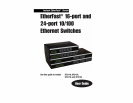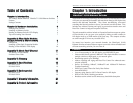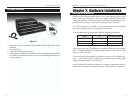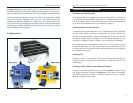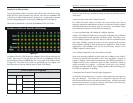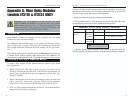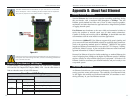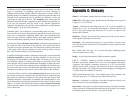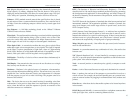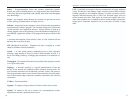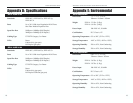
IEEE (The Institute of Electrical and Electronics Engineers) - The IEEE
describes itself as "the world's largest technical professional society, promoting
the development and application of electrotechnology and allied sciences for
the benefit of humanity, the advancement of the profession, and the well-being
of our members."
The IEEE fosters the development of standards that often become national and
international standards. The organization publishes a number of journals, has
many local chapters, and several large societies in special areas, such as the
IEEE Computer Society.
IGMP (Internet Group Management Protocol) - A multicast host registration
protocol that allows any host to inform its local router that it wants to receive
transmissions addresses to a specific multicast group. If there is more than one
multicast router on a given subnetwork, one of the routers is elected "querier"
and assumes the responsibility of keeping track of group membership.
Mbps (Megabits per second) - One million bits per second; unit of measure-
ment for data transmission.
Network - A system that transmits any combination of voice, video and/or data
between users.
NIC (Network Interface Card) - A board installed in a computer system, usu-
ally a PC, to provide network communication capabilities to and from that com-
puter system. Also called an adapter.
Node - A network junction or connection point, typically a computer or work
station.
Packet - A unit of data routed between an origin and a destination in a network.
Port - A pathway into and out of the computer or a network device such as a
switch or router. For example, the serial and parallel ports on a personal com-
puter are external sockets for plugging in communications lines, modems and
printers.
Print Server - A hardware device that enables a printer to be located anywhere
in the network.
RJ-45 (Registered Jack-45) - A connector similar to a telephone connector that
holds up to eight wires, used for connecting Ethernet devices.
15
DSL (Digital Subscriber Line) - A technology that dramatically increases the
digital capacity of ordinary telephone lines into the home or office and, by
employing unused bandwidth, still allows for normal phone usage. DSL pro-
vides "always-on" operation, eliminating the need to dial in to the service.
Ethernet - IEEE standard network protocol that specifies how data is placed
on and retrieved from a common transmission medium. Has a transfer rate of
10 Mbps. Forms the underlying transport vehicle used by several upper-level
protocols.
Fast Ethernet - A 100 Mbps technology based on the 10Base-T Ethernet
CSMA/CD network access method.
Fiber Optic - The medium and the technology associated with the transmission
of information as light impulses along a glass or plastic wire or fiber. Fiber
optic wire carries much more information over longer distances than conven-
tional copper wire and is far less subject to electromagnetic interference.
Fiber Optic Cable - A transmission medium that uses glass or plastic fibers
rather than copper wire to transport data or voice signals. The signal is imposed
on the fibers via pulses (modulation) of light from a laser or a light-emitting
diode (LED). Because of its high bandwidth and lack of susceptibility to inter-
ference, fiber optic cable is used in long-haul or noisy applications.
Full Duplex - The ability of a device or line to transmit data simultaneously in
both directions.
Half Duplex - Data transmission that can occur in two directions over a single
line, but only one direction at a time.
Hardware - Hardware is the physical aspect of computers, telecommunica-
tions, and other information technology devices. The term arose as a way to dis-
tinguish the "box" and the electronic circuitry and components of a computer
from the program you put in it to make it do things. The program came to be
known as the software.
Hub - The device that serves as the central location for attaching wires from
workstations. Can be passive, where there is no amplification of the signals; or
active, where the hubs are used like repeaters to provide an extension of the
cable that connects to a workstation.
14
EtherFast
®
16-Port and 24-Port 10/100 Ethernet Switches
Instant EtherFast
®
Series



